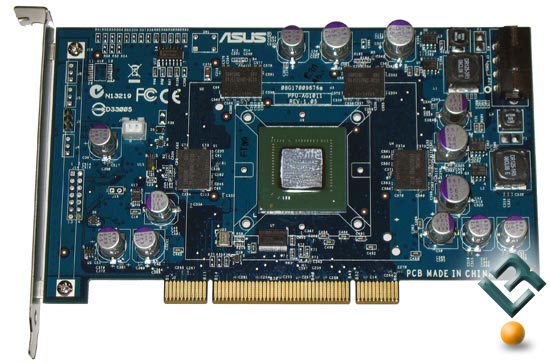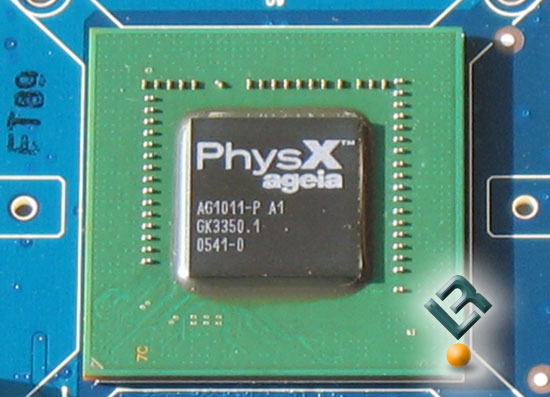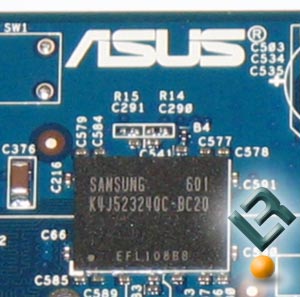ASUS’s AGEIA PhysX P1 Card
The ASUS PhysX P1 Naked
Before we take apart our ASUS PhysX P1 card, let’s take a second and look at the features on the PhysX P1.
ASUS PhysX P1 Features:
- Processor Type: AGEIA PhysX
- Transistor Count: 125 Million
- Manufacturing Process: 130nm
- Bus Technology: 32-bit PCI 3.0
- Memory Interface: 128-bit GDDR3
- Memory Capacity: 128MB
- Memory Bandwidth: 12Gbytes/sec.
- Memory Clock: 733MHz
- Peak Instruction Bandwidth: 20 Billion Instructions/sec
- Sphere-Sphere collision/sec: 530 Million max
- Convex-Convex (Complex) collisions/sec: 533,000 max
- Adaptor/Cable bundled: Power Cable
Many of the features found on the AGEIA PhysX core architecture are still a mystery to many of us. The PhysX is said to have “dozens” of fully independent cores, which makes sense if the card has 20 giga-instructions per second (20 GIPS) like AGEIA told us. To sum the architecture up we know that PhysX cards consist of a PhysX PPU with a 125 million transistor chip built on TSMC?s 130nm process that is connected over a high bandwidth bus to 128MB GDDR3 memory.

With the heatsink removed the PPU and GDDR3 memory can be clearly seen. If you have looked at video card reviews in the past this AGEIA PhysX card should look like a graphics card to you. The ASUS PhysX P1 utilizes the PCI bus, but AGEIA has informed us that future cards might transition over to use the PCIe bus. In order to use the PhysX PPU all you have to have is an open PCI slot and the suggested hardware to make sure you expierence is pleasant.

With the termal paste cleaned off we can see that our test card has the A1 revision of the PhysX core. AGEIA’s Physics Processing Unit is what provides hardware physics acceleration. The above pictured core provides support for up to 32,000 rigid body objects, soft body objects, particle systems containing 40,000-50,000 particles, fluid modeling and collision detection.

The ASUS PhysX P1 comes with 128MB of Samsung GDDR3 memory rated at 733MHz. After removing the heat sink we found Samsung GDDR 3 SDRAM IC’s that are rated at 2.0ns (500MHz). Since the ASUS PhysX P1 card is rated at 733MHz it means that these IC’s are actually running at lower than their rated dual data rate clock frequency. At full speed these IC’s are rated to run at 1.0Gbps/pin. The Samsung K4J52324QC-BC20 IC’s are still in production and operate at 1.8V.
Speaking of power let’s take a look at the power consumption of the ASUS PhysX P1 card.

Comments are closed.